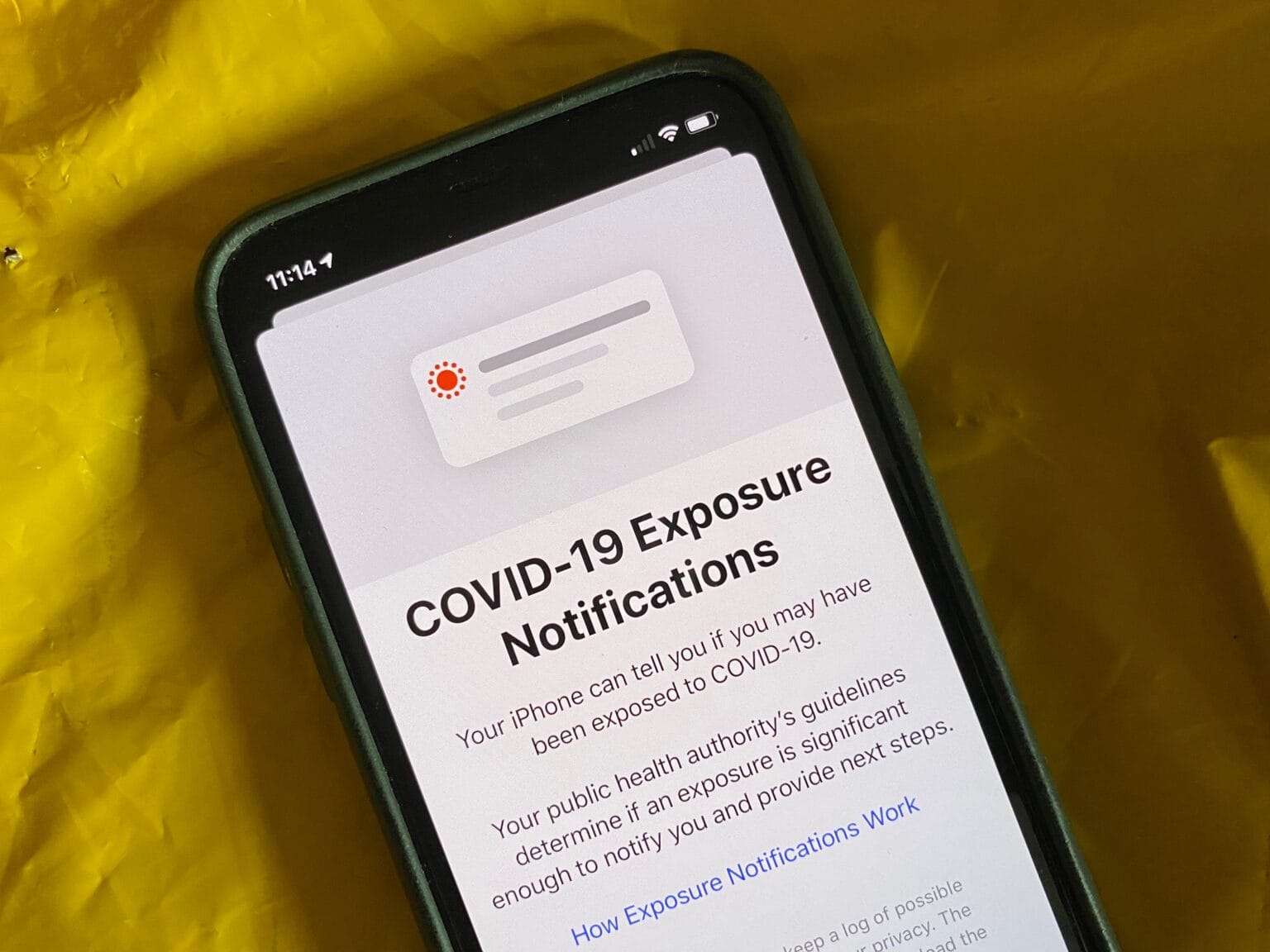Apple and Google moved fast to develop a COVID-19 contact-tracing solution that was both smart and privacy conscious. Unfortunately, more than six months after the companies announced the cross-platform approach to contact tracing, few places in the United States use it.
It’s a tough lesson for the world’s biggest tech company. And one that everyone is a little bit poorer for having learned.
Whether you’re the biggest fanboy or fangirl on the planet or the most suspicious antitrust regulator, there’s something everyone agrees on when it comes to Apple: Cupertino’s ecosystem works. Apple took the Alan Kaye vertical integration idea — that companies serious about software also build their own hardware — and ran with it all the way to the bank.
As Steve Jobs once said, Apple products just work. An iPhone communicates great with an iPad. An iPad speaks nicely to a MacBook. Apple Music plays on everything. It’s all perfectly presented in retail thanks to Apple stores. And, hey, you can even buy things with an Apple Card if you want.
Apple builds it all and, as a result, it fits together perfectly in a way that makes the very complex seem ridiculously simple.
The limits of solutionism
Tech’s belief in what writer Evgeny Morozov calls “solutionism” often shows up when companies take this idea of streamlined, one-click fixes and try to apply it to solve real-world problems. It’s unfair to describe it as naivety. However, it highlights how the messiness of the real world comes into conflict with the “it just works” mantras of Silicon Valley. As the most valuable tech company in history, Apple represents the achievements of Silicon Valley better than most — even if it’s an outlier in many of the ways that it operates.
But the coronavirus contact-tracing debacle shows that vertical integration doesn’t work in every scenario. Apple moved quickly when, in April, it announced that it had teamed up with Google (the company it once wanted to go to thermonuclear war against) to develop a contact-tracing tool that would, very smartly, alert users if they’d come in contact with infected individuals — without compromising privacy.
Apple’s Exposure Notifications system was smart, elegant and speedily implemented. All authorities needed to do was use the API to build their own local apps. Widespread adoption could make the manpower-intensive task of traditional contact tracing — which requires armies of trained staffers to locate and notify people potentially exposed to an infected person — much more manageable. Properly implemented, it could happen practically automatically for anybody carrying an iPhone or Android device with the app installed.
Did that happen? Mostly no.
COVID-19 contact tracing faces challenges
First there were the misguided fears about what exactly had been developed by the tech titans. Even with those worries mostly allayed, however, things haven’t been smooth sailing for Apple and Google’s COVID-19 contact-tracing solution.
Here’s David Uberti writing for The Wall Street Journal this week:
“Months after a burst of optimism about the potential for technology to help track the spread of Covid-19, a hodgepodge of mobile phone apps around the U.S. has yielded unclear results amid inconsistent policies and usage.
Ten states and Washington, D.C., have launched apps that notify users of exposure to infected people through a development framework built by Alphabet Inc.’s Google and Apple Inc. Eleven more are either piloting or building such tools.
But the lack of a national strategy — unlike in many European countries that have adopted such apps — adds a hurdle to making sure the tools work across state lines as case counts tick upward, tech and public health experts say.”
A graphic published with the article makes clear just how few states have adopted Apple and Google’s contact-tracing tool so far. The states that are using it, colored green, look like little more than a halfhearted smudge on a map that is otherwise pink to show no app whatsoever. A few places are trying two apps because, obviously, two is better than one. (Or some such nonsense.)
Apple, for its part, continues to improve its coronavirus response tools. On Thursday, it updated its accompanying COVID-19 screening app, adding new questions to help users work out symptom severity and more. But its biggest, most transformative effort — the contact-tracing tool built into iOS — continues to be frustratingly ignored.
Don’t blame Apple
Is it smart to blame Apple for the lack of success of contact-tracing apps? No, that would be ridiculous. However, it does show the challenges that Apple faces as it moves beyond putting a dent in the universe through making really attractive computers and smartphones, and into putting a dent in the universe by, say, lending its considerable resources to helping stop the spread of a pandemic. Apple can lead a horse to water, but it sure as heck can’t make it drink.
Apple CEO Tim Cook previously said Apple’s greatest contribution could wind up being in the health field. Based on genuinely impressive efforts like the potentially lifesaving Apple Watch, that looks possible. But when it comes to challenges like, say, tracking the spread of the virus that causes COVID-19, or simplifying and unifying health records for everyone, it seems like things don’t “just work” after all.
There may be an app for that, but the world’s no cosy Apple ecosystem. And we may all be the worse for it.


